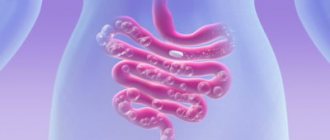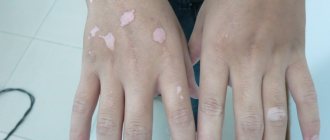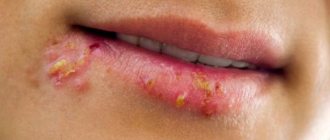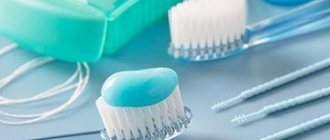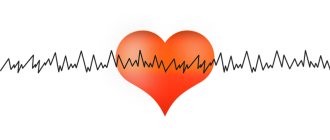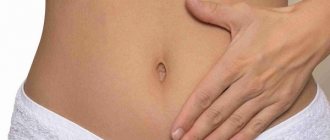The dean of the Faculty of Bioengineering and Bioinformatics of Moscow State University told The Village how science can extend human life in the future
The difficult-to-pronounce phrase “mitochondrial antioxidant”, or Skulachev’s ion SkQ1, is a substance that can prolong and improve human life. This development has been around for many years, but right now it is being tested on humans. Its author, Academician of the Russian Academy of Sciences, Director of the A. N. Belozersky Research Institute of Physics and Biology of Moscow State University, Dean of the Faculty of Bioengineering and Bioinformatics of Moscow State University Vladimir Skulachev told The Village whether scientists have learned to prolong life and how science will help avoid humiliating old age.
Formation of wax plug
Normally, the epithelial cells of the auditory canal secrete a liquid secretion, which dries up and is then freely removed from the cavity in the form of crusts due to the displacement of the anterior wall of the cartilaginous section, which occurs during the movement of the lower jaw when speaking or chewing. As mucus accumulates, it becomes thicker, and desquamated epithelium begins to enter the resulting mass, which increases its viscosity and volume.
Removing such a clot becomes problematic; it is called a wax plug. Over time, it can become tightly attached to the skin of the passage, causing the formation of bedsores.
Factors contributing to its occurrence:
- The anatomy of the auditory canal is its curvature in several planes, a small lumen;
- When the patient tries to clean the ear, mucus may get into the deeper parts of the passage;
- Physiologically high viscosity of liquid secretion discharged into the auditory canal;
- Use of hearing aids;
- Frequent inflammation of the middle ear;
- Periodic entry of water into the ear canal.
Classification of clots in the ear canals
In ENT practice, sulfur plugs are divided depending on their consistency. They can be:
- Soft;
- Dense;
- Rocky.
The higher their density, the more difficult the extraction. The color of the cork can vary from yellow to brown. Clots are also divided according to whether they completely or partially occupy the lumen of the ear canal.
Causes of blockage
In otolaryngology, there are a large number of reasons that contribute to the formation of a plug. This:
- High activity of the sulfur-producing glands, which provokes the production of secretions in large volumes. The substance does not have time to escape and accumulates, transforming into a dense plug. Hypersecretion often accompanies dermatitis, eczema, chronic otitis media, increased cholesterol levels in the blood, and too frequent improper cleaning of the ears.
- Difficulty removing wax from the ear canal. This happens because the excretion mechanism is disrupted. The reason is the narrowness of the auditory canal, its tortuosity, as anatomical features, narrowing due to inflammation, blockage by a foreign body, abundant hair in the auditory tube, constant use of headphones, use of a hearing aid.
- Working in dusty air is typical for miners, tobacco workers, etc.
- Strong moisture in the ear canal occurs in professional swimmers and divers. Even a small amount of sulfur swells, forming a plug.
- Incorrect technique for cleaning the external auditory canal. If the ear cleansing technique is violated, sulfur from the membranous cartilaginous section, where it is produced, is pushed deeper. This way it penetrates into the bone part. This complicates the removal of secretions and provokes the formation of a plug.
Symptoms of the disease, diagnosis
For a long time, the accumulation of sulfur in the deep parts of the canal can be asymptomatic.
The presence of a clot in the ears is manifested in the following clinical signs:
- Hearing loss, feeling of congestion. This symptom is the leading one. However, until a certain point, the patient may not notice any changes. Typically, a sharp deterioration is caused by water entering the ear. As a result, the wax plug swells and completely blocks the ear canal.
- Noise in ears.
- Autophony – the patient hears his own voice with a blocked ear.
- Dizziness, migraine.
- Nausea.
- Heartache.
Otolaryngologists also consider ear pain as a sign of cerumen impaction. It can occur due to an increase in pressure inside the canal to the site of clot formation. The formed air plug affects the receptors of the ear canals, causing pain. However, this symptom is atypical; if it appears, you should abandon independent measures to remove the clot and consult a specialist.
When making a diagnosis, the doctor is guided by the patient’s complaints and examination. Usually, establishing the presence of wax plug is not difficult.
Forecast
The prognosis for sulfur plugs is favorable. Any complications occur quite rarely, but there are cases of complications (in particular, intracranial ones) that require intensive care.
Kovtonyuk Oksana Vladimirovna, medical observer, surgeon, consultant doctor
7, total, today
( 47 votes, average: 4.60 out of 5)
Synechiae of the nasal cavity - bridges that interfere with breathing
Laryngomalacia in children: symptoms and treatment
Related Posts
What can and cannot be done on your own?
on your own , especially with the help of sharp objects, since in this case the lining of the ear canal is often injured. In addition, this can push the plug deeper into the ear canal, making it more difficult to remove.
You can try to dissolve or wash the clot yourself. If there is no improvement, contacting a doctor is a necessary measure.
Also, do not try to knock out the plug by hitting the ear canal with your palm. Sometimes this can help remove the water. It will not have any effect on the position of the plug.
Alternative methods for removing wax plugs from the ear at home yourself
Special medications can quickly and easily dissolve earwax, after which they are independently removed from the ear canal. These so-called cerumenolytics are sold in pharmacies and are highly effective. The method of application is described in detail in the instructions and does not cause any difficulties in execution. If you are planning to remove a plug from a child, be sure to check with your pharmacist about the possibility of using such drugs in childhood.
You will find drops for otitis media in adults in this article.
Ear wax plugs are an unpleasant but easily corrected phenomenon. Regular personal hygiene will minimize the risk of traffic jams, but even with individual characteristics and hereditary predisposition, you should not be too upset.
Treatment, removal of wax plug
The most effective treatment measure is rinsing . If it is impossible to use it, you have to remove the plug from the ear using a dry method. Before contacting a specialist, you can dissolve the clot yourself if you are confident that the eardrum is intact.
Rules for washing
It must be carried out according to the following rules:
- Studying the patient's medical history before the procedure. If there are perforations in the eardrum, chronic otitis media or hearing loss, rinsing is contraindicated. Fluid can get into the middle ear and cause inflammation.
- Rinsing is indicated in cases where the wax plug has not completely obstructed (blocked) the ear canal.
- For the procedure, water is used at a comfortable temperature, close to 37°.
- Before removing plugs with a hard consistency, they must first be softened. To do this, for 2-3 days before the procedure, special heated drops are instilled into the affected organ three times a day to dissolve the clot.
Important! After instillation, increased hearing loss may occur due to swelling of the plug. This reaction is normal and is not a cause for concern.
Washing consists of the following steps:
- Warm water is poured into a Janet syringe or a syringe without a needle with a rubber tip with a volume of 100-150 ml. Note. Janet's syringe is used to rinse cavities. Its design feature is the presence of a plunger or seal, as well as a blunt cone-shaped needle. This allows you to avoid sudden injection during procedures and not injure the patient. Some offices may be equipped with irrigators specifically designed to remove wax from the ear.
- The jet should be directed up and back, along the wall of the ear canal. It is necessary to pull the auricle in the same direction. For children, it is pulled back and down. The patient's head should be tilted in the direction opposite to the affected ear (for example, if the plug is in the right meatus, the head should be tilted to the left).
- After some time, the patient changes the position of his head. The liquid pours out, taking with it the sulfur plug.
- Remaining moisture must be removed with cotton swabs or a probe with cotton wool wound onto its end.
- It is better to temporarily plug the ear canal with a swab soaked in boric acid.
It is worth noting that the use of special irrigators is preferable to old methods of removing wax plugs. The reason is that when injecting with a syringe, it is possible to create excess pressure: according to E.V. Garov, head of the ear microsurgery department at the Moscow Scientific and Practical Center, it can reach 10 atm. Whereas the eardrum can withstand pressure of no more than 2 atm. As a result, there is a risk of injury. This outcome occurs in 0.1% of cases when washing is carried out by specialists. At home, the percentage is much higher. Modern irrigators allow you to set the desired pressure parameters and avoid complications after removing wax plugs.
Dissolution of the plug (cerumenolysis)
At home, you can try to get rid of a clot in the ear canal yourself. The following drugs are suitable for this:
- Cerumen-A. The product is suitable both for dissolving plugs and as a hygiene measure for the ear canal. It can be used from 2.5 years. Cerumen prevents wax from sticking to the canal skin or promotes its separation. In the presence of purulent inflammation in the ear, as well as perforations in the eardrum, its use is contraindicated. To dissolve the wax plug, one injection of the drug is made into the sore ear, after a minute the head is turned to allow the solution to flow out. To completely remove the clot, you can rinse with additional water or saline.
- Remo-vax. The drug contains antiseptic, anti-inflammatory compounds and oils. They soften the plug, narrow the pores, reducing the secretory activity of the epithelial cells of the ear canal. Remo-vax is available in two forms - drops and spray. It should not be used if there are signs of inflammation - separation of purulent contents, ear pain. The dosage for removing traffic jams is 10-15 drops. Waiting time is up to 20 minutes. For old traffic jams, the procedure can be repeated every day for 5 days. For prevention, they should be used twice a month.
- Sodoglycerin drops. The drug is rarely on public sale; in medical institutions it is prepared immediately before the procedure from soda and glycerol; the drug must be ordered at the pharmacy. The dosage is 5-10 drops, the duration of the medicine is 10-15 minutes. The drops help soften the cork and make it easier to wash out.
- Hydrogen peroxide. Use a 3% solution. When using peroxide in patients with sensitive skin of the ear canal, the concentration must be halved. Up to 10 drops of solution should be poured into the sore ear. During its action, the patient may hear a characteristic hissing and crackling sound.
Previously, it was widely practiced to remove traffic jams using candles. Wax-soaked pieces of fabric were inserted into the ear and briefly set on fire. However, this method is quite dangerous and there is a high risk of burns. Given the large arsenal of modern means, it is definitely not worth treating plugs with ear candles.
Dry wax removal
Instrumental removal of wax plug: curettage
The procedure is carried out only in a medical institution by a medical specialist. You can clean your ear dry using two main methods:
- Aspiration;
- Curettage.
The first method is modern; a device such as an aspirator cannot be found in every clinic or hospital. Its action is based on creating a pressure difference, as a result of which the plug is “sucked out” from the ear. One of the side effects of the procedure is disruption of the vestibular apparatus.
Curettage can be performed under general anesthesia. A probe with a hook is inserted into the patient's ear, if necessary, the plug is pierced and the plug is pulled out. It is recommended to carry out control using a microscope, otherwise there is a high risk of injury. After the procedure, antibiotics may be injected into the ear canal.
Making your own ear candles
If you are unable to visit a pharmacy for one reason or another, you can make your own candle at home. Simple and accessible materials are used for preparation:
- pencil;
- cotton or linen fabric;
- beeswax or regular candle;
- sunflower oil.
Cut the fabric into strips 3-5cm wide. and as long as a pencil. Melt the wax in a water bath or frying pan and dip strips of fabric into it. Lubricate the pencil with vegetable oil. When the strips are completely saturated, apply them tightly to the pencil and wrap it around it in a spiral, leaving no gaps. Give the resulting candles time to cool. Then carefully pull out the pencil. The result is hollow wax tubes.
Treatment of eczema with folk remedies.
How to cure the flu at home, read this article.
Treating cough: expectorant folk remedies.
Removing wax plug from a child
In children, clots in the ear canals are formed by the same mechanisms as in adults. The specificity of treatment comes down mainly to the psychological aspect. When diagnosing, parents should pay attention to the fact that the baby rubs the ear, scratches, and behaves restlessly. Similar symptoms may occur during teething. If a child has an earache, the discomfort should intensify when pressing on the tragus. If the plug is not visible visually, it is better to entrust further actions to a specialist.
Before going to the doctor, the child must be reassured and reassured that he will not feel any pain. You can play out the situation with a toy, show on it how you need to tilt your head, how the doctor will instill drops and pour in liquid.
What is earwax used for?
The main purpose is protective functions, they have a barrier effect for water and dust, due to their composition (mainly from fats). The discharge has some acidity, as a result of which harmful microorganisms do not multiply.
Sulfur is secreted by special glands, which includes:
- various enzymes and lipids;
- immunoglobulins and hyaluronic acid;
- inclusions of epithelium and keratin;
- cholesterol;
- other substances of organic origin.
In the normal state of the hearing organs, sulfur is released in the required volume and is excreted during the work of the jaw muscles and conversation. If this does not happen, the discharge accumulates and a plug forms in the ear.
Consequences of wax removal
In the vast majority of cases, the procedure does not have any side effects. The following complications are rarely possible:
- Injury to the ear canal.
- Infection of the middle ear in the presence of undetected perforations of the eardrum.
- Allergic reaction to any component of the drug.
You should consult a doctor if you have the following symptoms:
- Earache.
- Separating from the passage of liquid contents.
- The appearance of hives and red spots on the skin.
- Heat.
- My ear was blocked for a long time.
Getting rid of wax plug is quite simple; almost any nurse can handle this task. However, timely oral hygiene will help avoid this procedure and its possible complications.
Complications
Complications that may accompany wax plugs are:
- conductive hearing loss – hearing impairment;
- bleeding - due to the patient’s excessive activity aimed at independently removing the cerumen plug;
- infectious and inflammatory complications.
The latter include a number of pathologies that formed as a result of the patient’s independent attempts to clean the external auditory canal, which resulted in a violation of the integrity of the skin, its infection and the spread of pathogenic microflora to other organs and tissues. These are mainly long-term complications that take time to develop. These include:
- myringitis – inflammation of the eardrum;
- Otitis media – inflammation of the structures of the middle ear;
- otomycosis – fungal inflammatory infection of ear structures;
- labyrinthitis is an inflammatory lesion of the labyrinth of the inner ear.
If patients are extremely inattentive to their health and the condition is severely neglected, long-term complications may occur such as:
- meningitis - an inflammatory process in the meninges;
- encephalitis - inflammatory damage to brain tissue;
- thrombophlebitis of the cavernous sinus - simultaneous inflammation and blockage by a thrombus (blood clot) of the splitting of the dura mater, which plays the role of a reservoir of venous blood;
- sepsis is the spread of an infectious pathogen from the primary focus throughout the body.
Ear canal hygiene and prevention of plug formation
As part of your daily hygiene, you should avoid using cotton swabs and other hard or sharp objects. They can not only lead to the pushing of sulfur deep into the passage, but also injure the delicate skin of the canal (its thickness is only 0.1 mm). Cotton swabs usually allow you to get only part of the sulfur. It is optimal to wash the canals with plain water and soap. Children under one year old need to clean only the outer part of the canal with dry cotton wool twice a week.
An important preventative measure is timely sanitation (cure) of all ear diseases. This is especially true for purulent infections. Constantly separating liquid secretion can easily cause a plug to form. When swimming, you need to use special hats, plug your ears with American plugs or cotton swabs soaked in Vaseline.
Important! Earplugs available in pharmacies are not suitable for this purpose, since they often leak water.
Preventive actions
To avoid the formation of ear plugs, you should adhere to the following recommendations:
- Once a week, clean the ears with children's cotton swabs that have a limiter. It is also permissible to use your finger, wrapping it in gauze. It is recommended to perform all manipulations with extreme caution, without performing any pressing movements.
- To improve the natural separation of sulfur, it is worth doing gymnastics every day. To do this, you need to pull your earlobes down several times.
- When swimming, you should use ear plugs, a cap or headphones. After bathing, you should thoroughly wipe your ears. You can insert cotton wool into them to facilitate moisture absorption.
To improve the removal of sulfur, you can use special drops - Remo-vax or A-cerumen. For preventive purposes, such drugs are used twice a month. You can use Vaxol spray 1-2 times a week. The product should be used before visiting the pool once a day.
